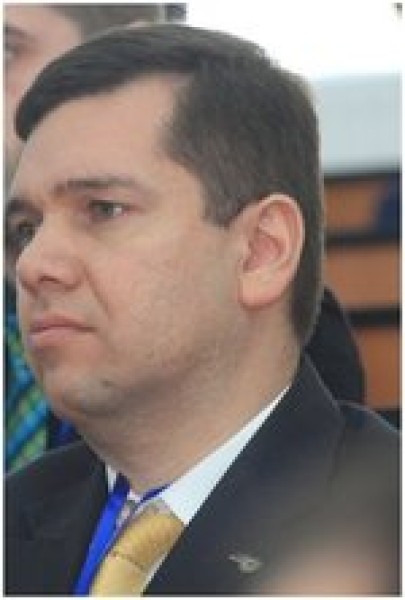Special Sessions of ICCCC2018
Special Session 1: Network Optimization and Security
Organizers and Chairs:
Prof. Yezid DONOSO
Prof. Yezid DONOSO, Head of the Information Security Postgraduate and Master Program, Systems and Computing Engineering Department, Universidad de los Andes, Cra. 1 Este No. 19A-40, Phone 57-1-3394949 Ext 1723, Bogotá, Colombia, South America, E-mail: ydonoso@uniandes.edu.co
Prof. Dominic BUCERZAN
Prof. Dominic Bucerzan, Faculty of Exact Sciences, Department of Mathematics and Computer Science, Aurel Vlaicu University of Arad, E-mail: dominic@bbcomputer.ro
Session Scope:
The convergence in communication networks and computing has led the exponential growth of new applications and information systems. Nowadays, users and applications generate and request more data demanding efficient and secure management. New algorithms are needed to manage the network resource allocation improving the network performance, response against failures, congestion and attacks; and to avoid loss of confidentiality, integrity or availability in the network.
Session Topics
T.1.1. Network Optimization:
Advanced Network Architecture; Computational complexity and data structures; Distributed Algorithms for control and management in Communication Systems; Energy Efficiency in Wireless Networks; Mobility, Handoff, and Location Management; Network Algorithm analysis; Network Structure, Routing and Resource Management; Networks Survivability against Failures, Congestion and Attacks; Network Planning; Quality of Service / Quality of Experience Optimization; Software Define Network; Scheduling and Network Optimization; Self-Organizing Networks; Reliable Networks; Special Topics in Network Optimization.
T.1.2. Security:
Intrusion; Detection and Prevention Systems; Network Authentication and Key Management; Network Reliability; Privacy and Anonymity; Secure Networking; Secure Network Protocols; Security for Cloud Networking; Security for Internet Applications; Security for Wireless Sensor networks; Security for Smart Grids; Security for Vehicular Networks; Security for Critical Infrastructures; Special Topics in Security.
*****************************************************
Special Session 2: Advances in Fuzzy Systems
Organizer and Chair: Prof. Barnabas BEDE
Prof. Barnabas Bede, Department Chair, Mathematics, DigiPen Institute of Technology, Redmond, Washington, USA, E-mail: bbede@digipen.edu
Session scope:
Fuzzy (Inference) Systems constitute the main applications of Fuzzy Sets and Fuzzy Logic. The two main types of fuzzy systems were introduced by Mamdani and Assilian (MA) in 1975, and Takagi, Sugeno and Kang (TSK) in 1985 and 1988. Subsequently, in 1993 Yang introduced a fuzzy system of TSK type called Adaptive Network-based Fuzzy Inference System (ANFIS), and developed an efficient learning algorithm for them. Since then, these three architectures were widely used in applications in various areas of Science and Engineering, however, their theoretical properties received less attention. The present special session proposes to ignite new ideas leading to both theoretical and practical advances in Fuzzy Systems.
Topic 2.1:
Theoretical aspects that the session is interested in, are: approximation properties, higher order fuzzy systems, novel types and architectures of fuzzy systems and their connection to Neural Networks and other Machine Learning techniques. Interpretability of fuzzy systems, motivates their use in knowledge extraction and knowledge representation.
Topic 2.2.:
Application areas ranging from control systems to various novel research areas are intended to be discussed as well. The main areas sought to be infused with Fuzzy Sets, Fuzzy Logic and Neural Networks, are overlapping with Machine Learning techniques. Other interesting questions to be answered are comparison of various types of fuzzy systems.
********************************************************
Special Session 3: Brain-inspired Nano-architectures
Organizer and Chair: Prof. Valeriu BEIU
Prof. Valeriu Beiu, Department of Mathematics and Computer Science, Aurel Vlaicu University of Arad, Romania, E-mail: valeriu.beiu@uav.ro
Session scope
Brain-inspired systems are, most often than not, equated to artificial neural networks. When adding nano-architectures it is to be expected that most if not all would think of neuromorphic chips. In fact, here our view is different. The raison d’être is the maturation over the last half-century of several fields into A Nanotechnology-Inspired Grand Challenge for Future Computing aiming to develop “a new type of computer that can proactively interpret and learn from data, solve unfamiliar problems using what it has learned, and operate with the energy efficiency of the human brain.” It is fascinating now to ponder on what Robert Noyce, co-founder of Intel, stated in 1984: “Until now we have been going the other way; that is, in order to understand the brain we have used the computer as a model of it. Perhaps it is time to reverse this reasoning: to understand where we should go with the computer, we should look to the brain for some clues” (The Next 100 Years, IEEE Centenary). That is why this special session aims to be a melting pot of ideas looking at the brain (brain-inspired) from different angles, trying to foresee how future computing based on nano-devices (nano-architectures) might look like.
Topic 3.1.
Anything reliability-related trying to find answers to questions like:
3.1.1. What is the meaning of computing when the elementary nano-devices no longer exhibit the level of determinism required by the classical von Neumann architecture?
3.1.2. Which are the alternate computing models that acknowledge nano-device variations and errors, e.g., by embracing their intrinsically statistical behaviors?
3.1.3. Which are the new design principles and system theory based on such variation - aware models?
3.1.4. What are the fundamental limits of computing when entering this realm where reliable-enough computing is achieved with imperfect (crummy) components?
Topic 3.2.
Any directions of research with the potential to close the power/energy gap (between brain and chips), trying to answer questions like:
3.2.1. Which are (some of) the fundamental reasons for the gap?
3.2.2. Which would be the advantages of changing the information carrier, or of using more than one information carrier?
3.2.3. Which type of communication (“wire”) should we use, and should we use more than one type? This is because Carver Mead stated that “we lose a factor of about 100 because [...] we spend most of our energy charging up the wires and not the gate”
3.2.4. Which are the roles crowding plays in this quest, and how to take advantage of these?
**********************************************************
Special Session 4: Affective Computing
Organizer and Chair: Acad. Arturas KAKLAUSKAS
Prof. Arturas Kaklauskas, Chairman of the Department of Construction Economics and Property Management, Director of the Research Institute of Smart Building Technologies, Member of the Lithuanian Academy of Science, Vilnius Gediminas Technical University, Lithuania, E-mail: arturas.kaklauskas@vgtu.lt
Session Scope:
Affective computing is presently one of the most dynamic scientific matters, having progressively exhaustive consideration. This robust attention is determined by a varied range of up-to-date systems and devices in many fields, such as smart systems, e-learning, market research, robotics, social monitoring, advertisement, medicine, security, smart cities, smart buildings, smart cars, virtual reality, affective agents, collaboration apps, recommender systems, etc. Affective computing concerns multidisciplinary background knowledge, such as psychology, cognitive and computer sciences.
Session Topics
T.4.1. Technologies:
Emotional speech (algorithms, databases, speech descriptors), facial affect detection (facial expression databases, emotion classification, facial action coding system, challenges in facial detection), behavioral (the pattern of behavior of a person, including but not limited to typing rhythm, gait, and voice), body gesture, physiological monitoring (fingerprint, palm veins, DNA, palm print, hand geometry, iris recognition, retina and odour/scent, blood volume pulse, galvanic skin response), visual aesthetics.
T.4.2. Applications:
Smart systems, e-learning, market research, robotics, social monitoring, advertisement, medicine, security, smart cities, smart buildings, smart cars, virtual reality, affective agents, collaboration apps, recommender systems, financial, consumer/residential systems, healthcare, logical access control, military, construction, chemistry, automotive industry, electronic industry, power engineering, hospitality industry, food industry, software industry, entertainment industry, cultural industry.




